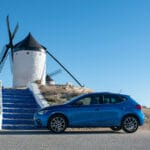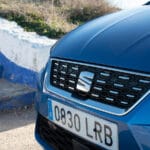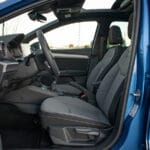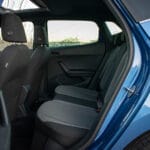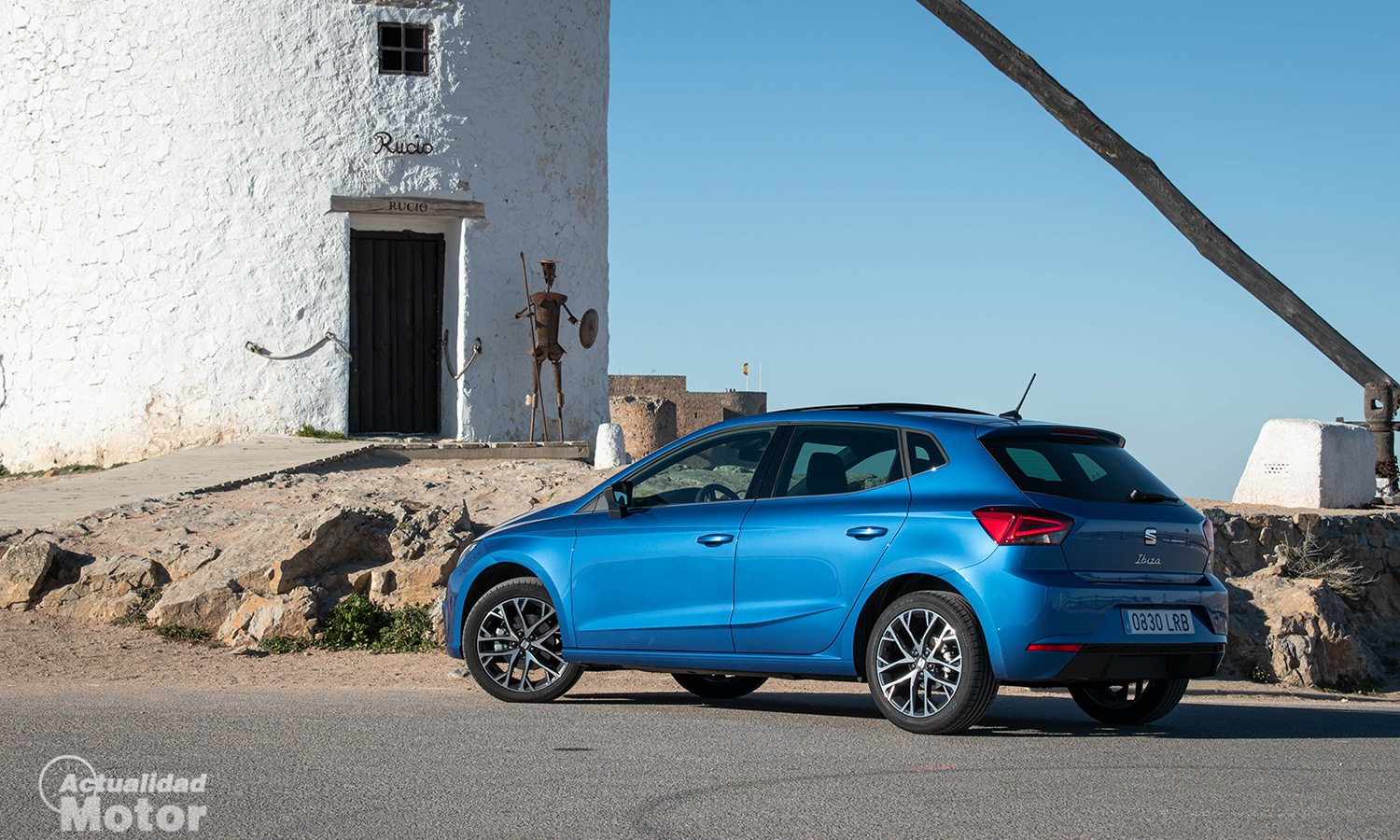
El Seat Ibiza has been the highest representative of the Martorell brand in the last four decades. True, now the Arona It exceeds it in annual sales volume, but the Ibiza is still by far the best-selling car in the brand's history with more than 6 million units. Yes, even more than the myth, the Seat 600.
This utility manufactured in Barcelona presented its fifth generation in 2017, already accumulating a few years. For this reason, in the second half of 2021, they updated the model with a restyling, introducing equipment improvements and slight aesthetic variations. In this case we try the Seat Ibiza 1.0 TSI 110 hp with manual gearbox, one of the most interesting options.
Is it really a restyling? changes are minimal
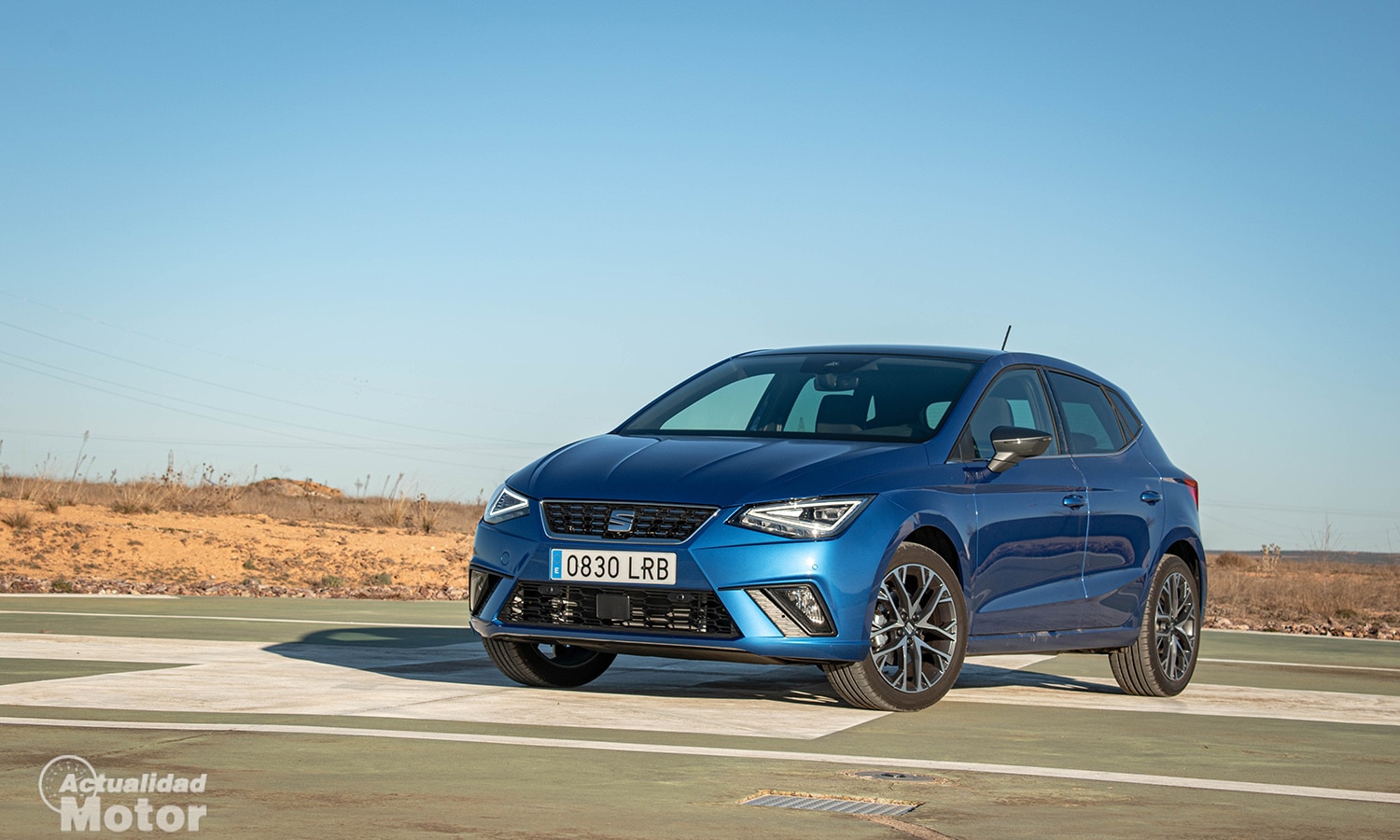
It is not easy to find notable differences between the updated Ibiza and the pre-restyling variants. Note that this unit is configured with the trim level xcellence, the most elegant, that Seat has stopped marketing just a few days ago in this model with the aim of reducing its CO2 emissions.
The truth is that you have to be very observant to distinguish between previous and updated versions, looking at specific details such as the design of some new wheels, the handwritten inscription of the model name on the tailgate or the new SEAT brand logo, with a matte finish in the central area and shiny on the edges.

Naturally, the outer dimensions do not change either, remaining at 4,06 meters long, 1,78 wide and 1,44 high, with a wheelbase of 2,56 meters. In case there was still any doubt, the Seat Ibiza is a clear B-segment model, where it fights with the Renault Clio, Peugeot 208, VW Polo, Hyundai i20, Skoda Fabia, Opel Corsa o Ford Fiesta among others.
Inside, the improvements are noticeable, especially in technology
Quite a bit bigger is the update inside, with a much more technological style. The first thing to mention is the new 10,25-inch digital instrument cluster, which is customizable and with several display options. It is optional in the intermediate variants and standard in the superior ones.
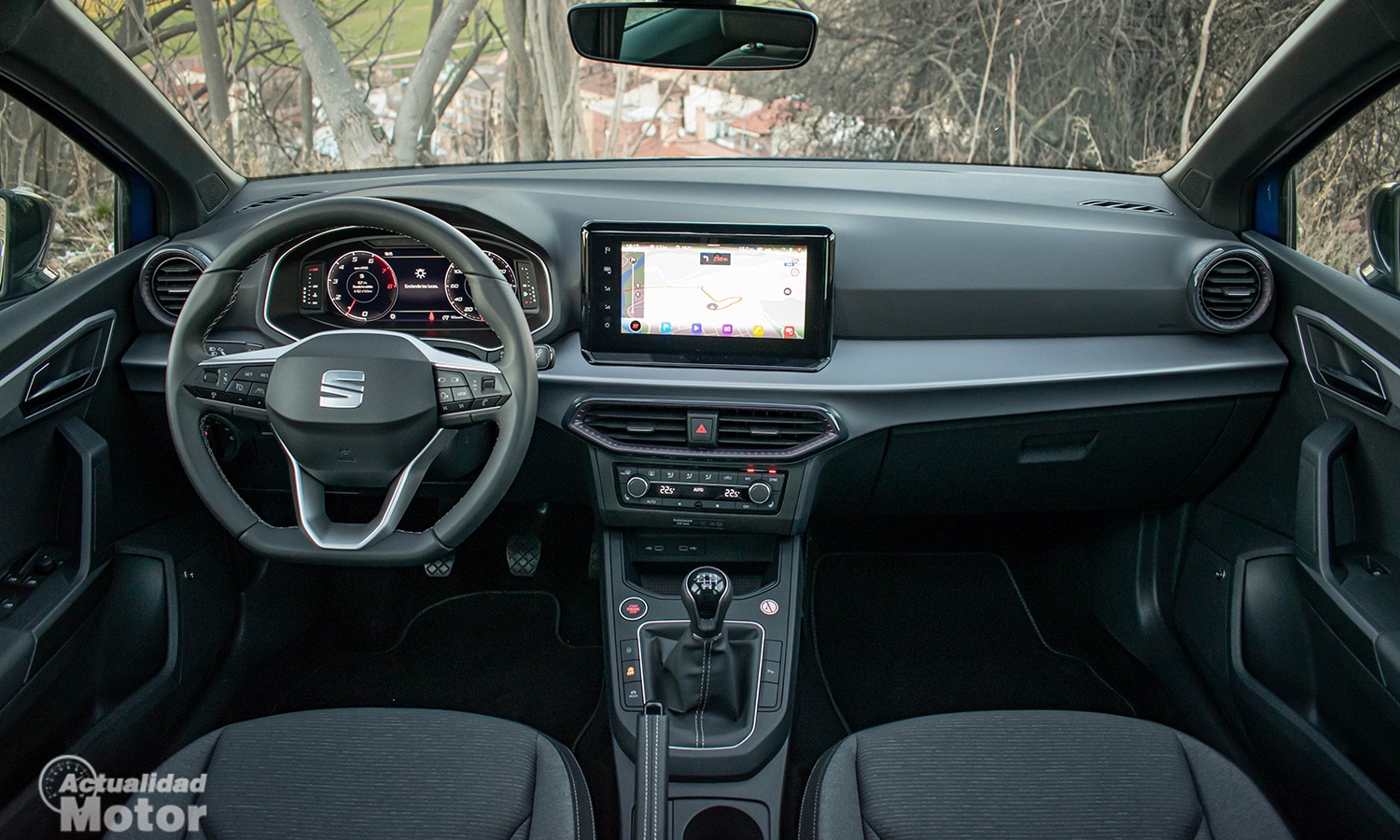
Similarly, the touch screen integrated part of the dashboard that we have seen until now has been replaced by a floating-style one, which it reaches 9,2 inches in the most equipped variants. This higher position reduces distractions and improves visibility. By the way, it comes with Wireless Apple CarPlay and Android Auto.
Despite the larger size and prominence of this new main screen, the Seat Ibiza maintains independent controls for the air conditioning. Quite a success, not like in the León, for instance. Just below we have a hole of wireless charging for the mobile and a pair of USB-C sockets.
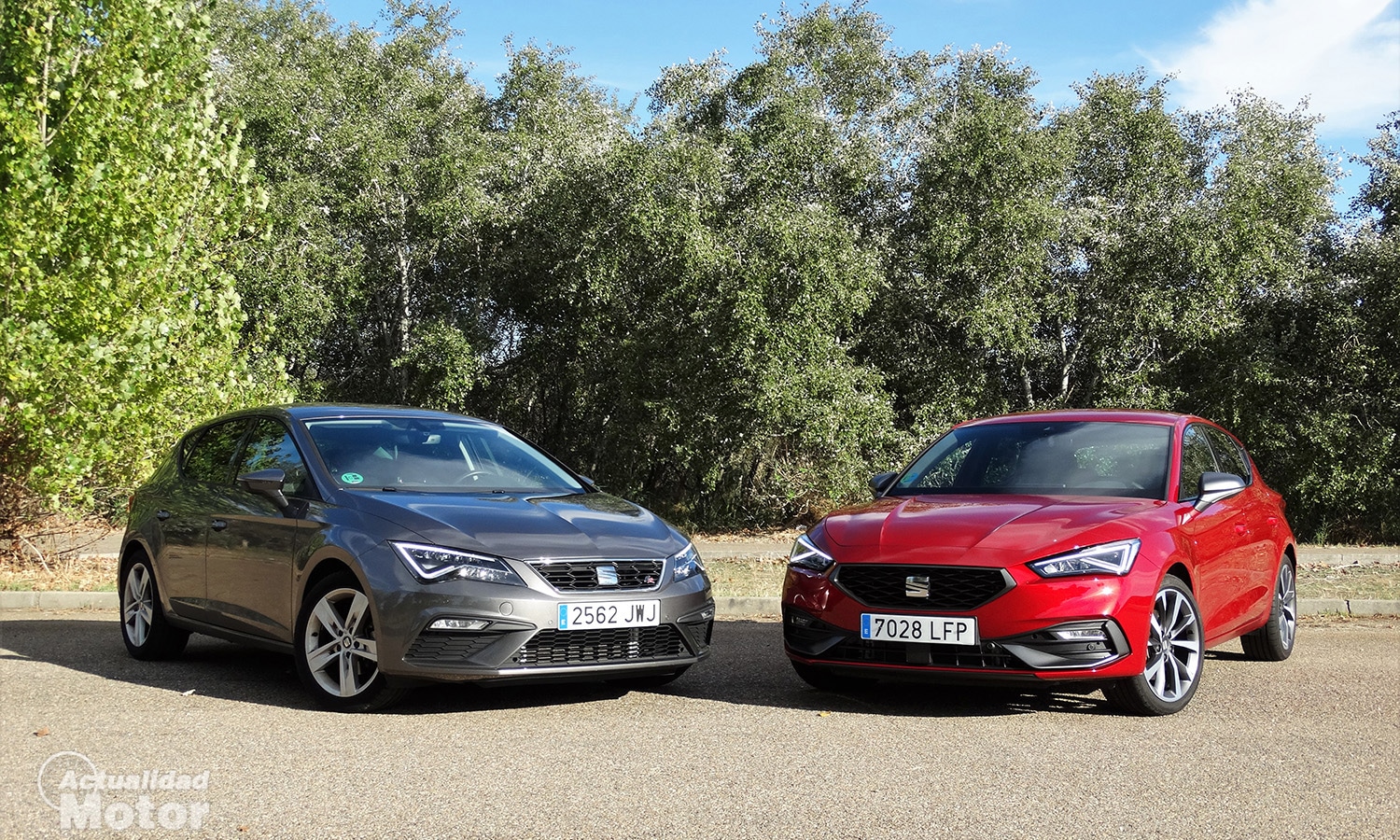
Some other new details that are incorporated in the restyling of the Seat Ibiza are, for example, the illuminated main air vents for the higher versions. It is not something really important, but they are one of those details that look good inside any car, especially at night.

To top it off, the feel and appearance of the materials are generally at a correct level. Obviously it is on a step below cars like the Volkswagen Polo, hearing some noises when pressing on certain plastics and points on the dashboard, but after all we are in a general brand utility car. In addition, there are some fluffy materials in the upper areas; You can't ask for much more in that regard.
In habitability and trunk the Ibiza is still one of the best
As you may already be imagining, as it is only a restyling and the main dimensions of the bodywork are maintained, no change in habitability. In that aspect, the Seat Ibiza is a car that meets satisfactorily, with a good use of the dimensions. The front seats are sufficient for sizes within normality and there are good storage compartments.
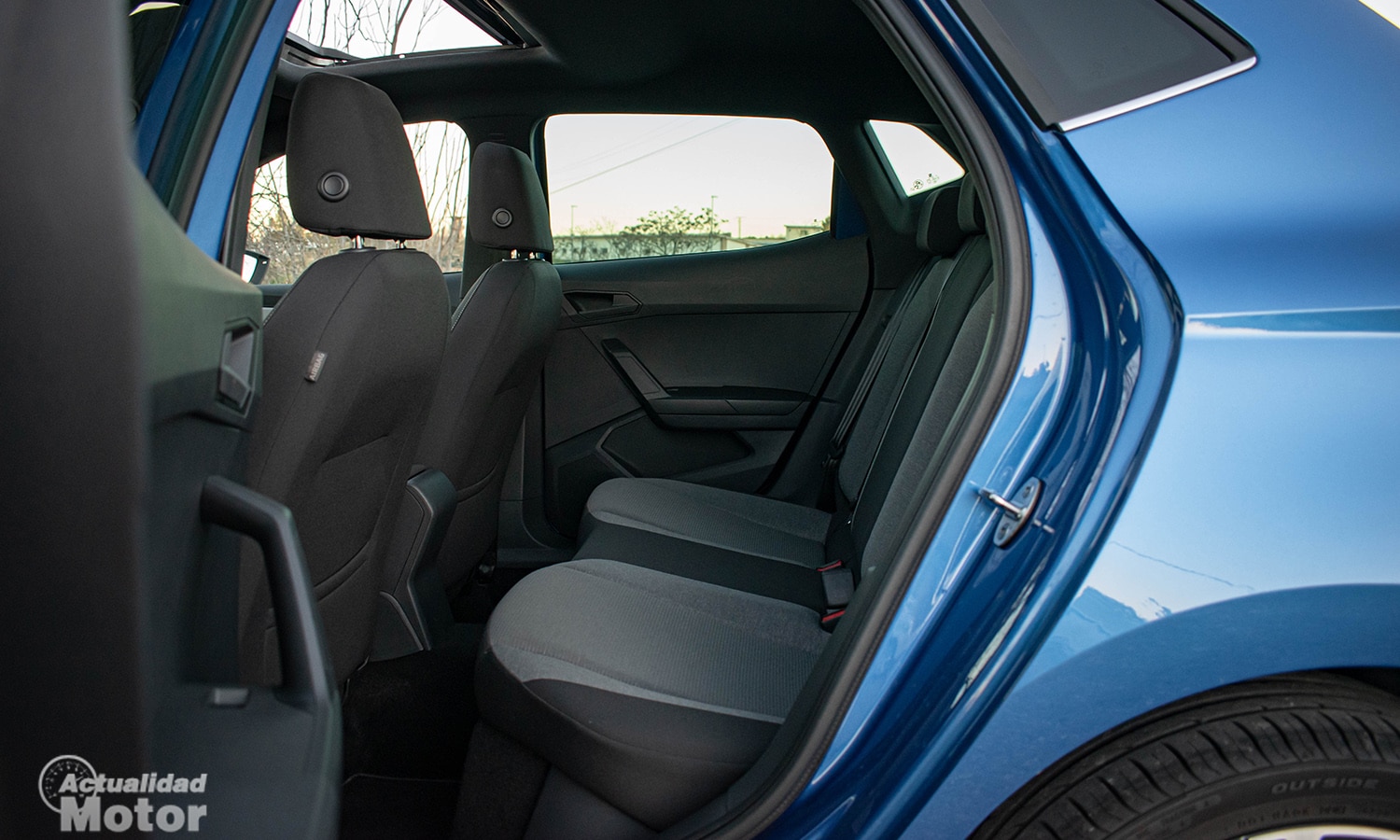
At Lóleo Eventos, second row there is also a correct space. With the driver's seat adjusted to my 1,76, sitting in the back seat I have room for my legs and knees, and I can also place my feet under the seat. For the head I am not much less overwhelmed, because there is enough margin. I think that people who are 1,80 or even slightly taller can go with relative comfort here behind.
Of course, three adults will not be comfortable in the rear seats. Firstly because width is not the strong point of any of these utilities and secondly because the transmission tunnel is large and intrusive for the central occupant to place their feet.
And if we take a look at the trunk, still cubing 355 liters, which is a lot and is also easily usable for their shapes. It is not the largest in the entire category, but it is one of the most bulky and usable. Keep in mind that his older brother, the León, has a volume of 380 litres.

The engines available in the Seat Ibiza: neither diesel nor electrified
The mechanical offer of the Seat Ibiza is not too wide, since it is missing that, for example, there is a diesel option available for those customers who do many kilometers throughout the year. A pity that most brands are completely removing these options.
The most accessible engine is the 1.0 MPI three-cylinder without turbo and with 80 hp. The next step is 1.0 TSI 110 hp, which is undoubtedly the preferred option by the vast majority of Ibiza customers, being able to choose both with manual transmission and with the DSG. And so we give way to the most performance, the 1.5 hp 150 TSI, which is only combined with the 7-speed DSG.
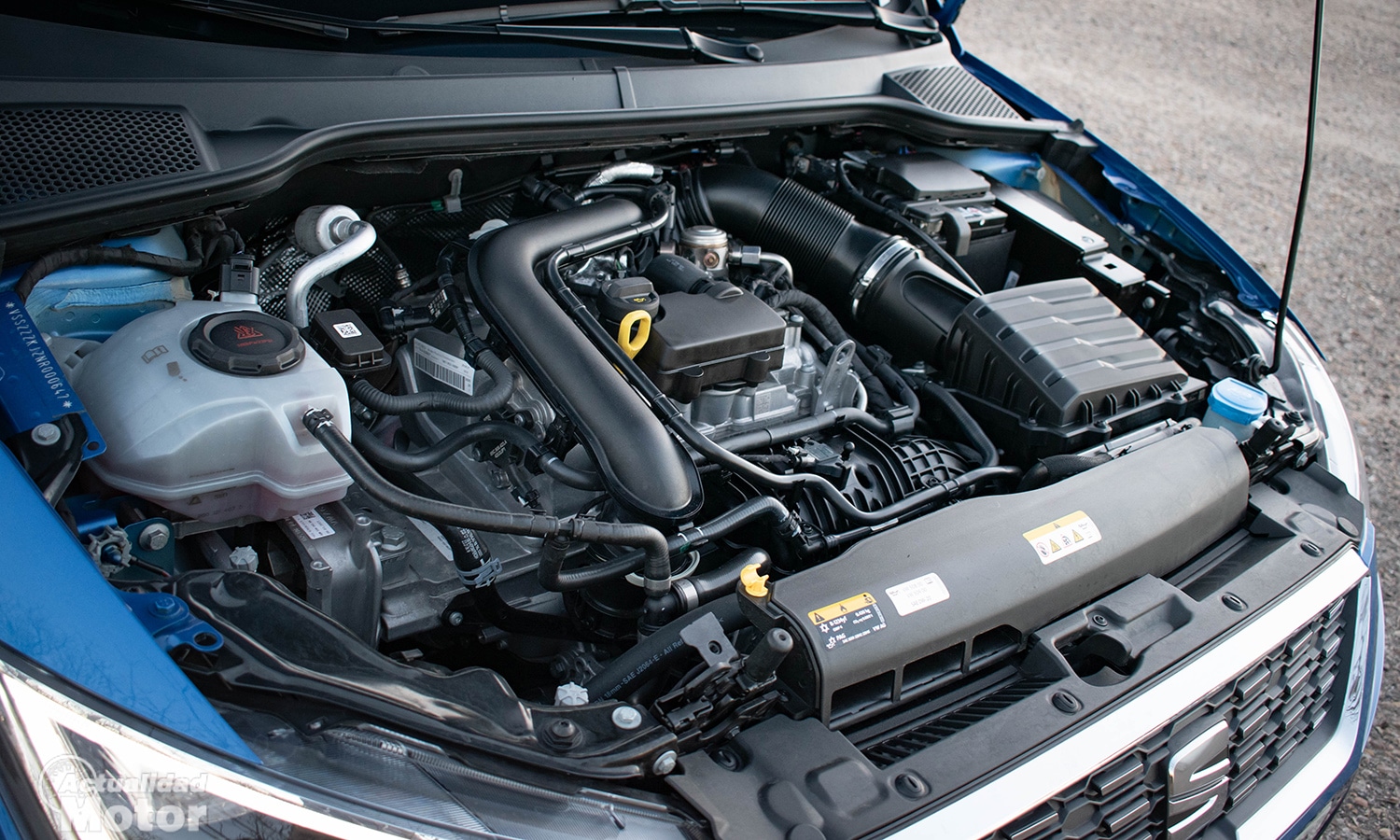
On the other hand, the Seat Ibiza continues to offer the variant 1.0 TGI 90, which as you know resorts to NCG As fuel. It also has a fuel tank, but it is small (only 9 liters), as this version is designed to get the most out of the Compressed Natural Gas system.
It is a pity that none of the gasoline versions have some type of microhybridization, because in this way we cannot have a petrol Ibiza with the DGT Eco sticker, which is so precious in big cities. Only the natural gas variant receives it, the rest carry the C label.
At the wheel of the Seat Ibiza
The Seat Ibiza has been characterized in the last two generations for being a car very complete and versatile; that is to say, that it feels very agile to stroll, but that at the same time transmits comfort and stability both on the highway and when facing a winding road.
The 1.0 TSI engine is the ideal, without a doubt

This mechanical version is the most recommended, the most balanced. The motor 1.0 TSI gives its 110 hp at 5.500 laps, although the most interesting is his 200 Nm torque between 2.000 and 3.000 revolutions per minute. Below 1.800 rpm it feels sluggish, but right at that speed the turbo kicks in and it pushes quite happily.
In fact, to carry out a relatively happy driving, it is not necessary to take it very high in revolutions, but to prevent it from falling below 2.000. Obviously, if we want maximum performance to overtake, for example, we already have to raise it to the top, although the difference in delivery is not huge.
Probably the only downside to this mechanic is that vibrates a little at idleThese vibrations reach the seat and the steering wheel when the engine is cold. Similarly, it also tends to jerk when starting from a stop on a hill, but this is quite common with these supercharged three-cylinder engines.
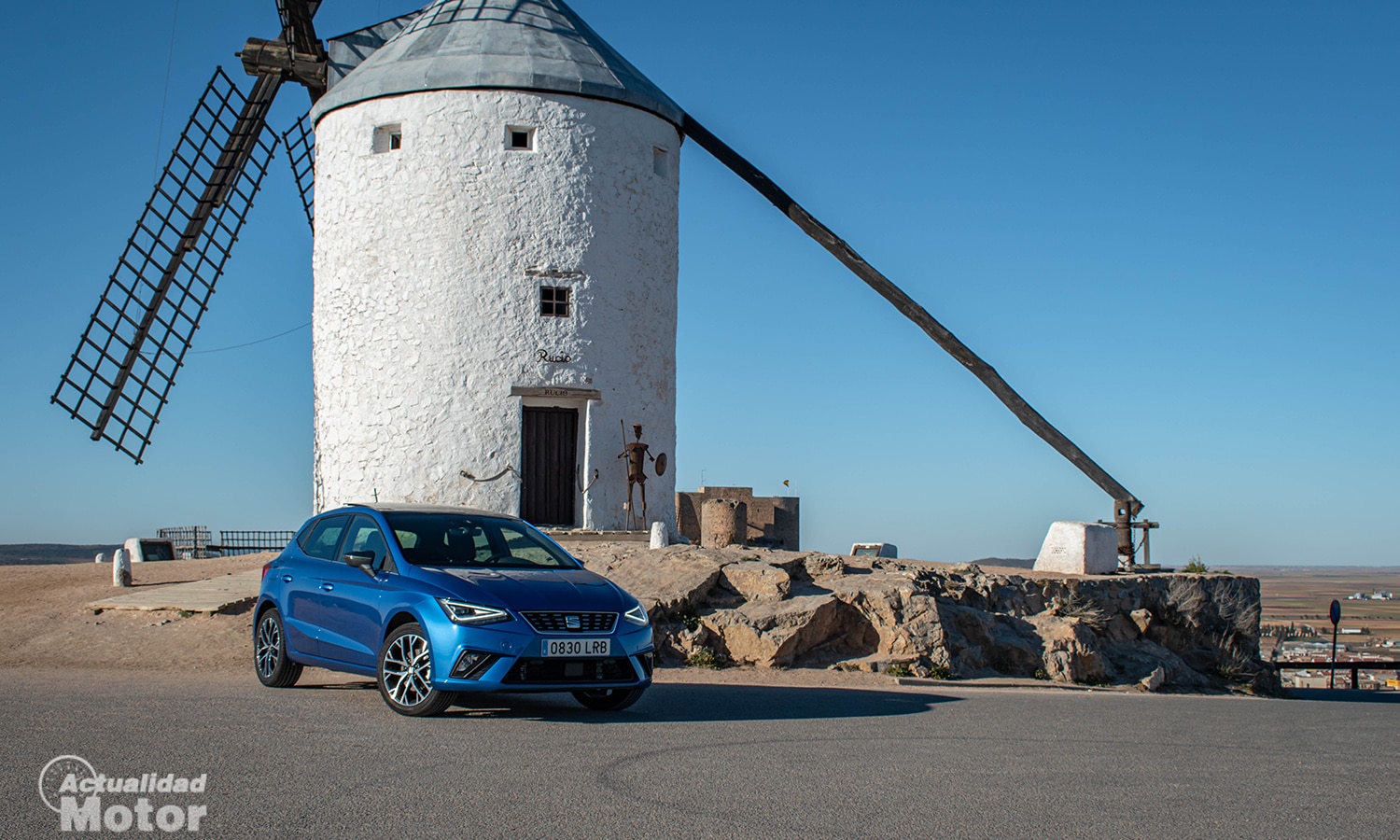
Then, on fast roads, it offers decent recoveries and It is not noisy or conveys the feeling of being "forced". In fact, it seems to feel very comfortable at relatively high speeds. And speaking of driving at high speeds, on the highway not too much aerodynamic noise reaches the passenger compartment, always bearing in mind that it is a B-segment car.
The chassis and its balance
But it's not just a good engine, you have to have a good chassis. In this aspect, the Seat Ibiza uses the Volkswagen Group MQB A0 platform, shared with the Polo and the Fabia, among others.

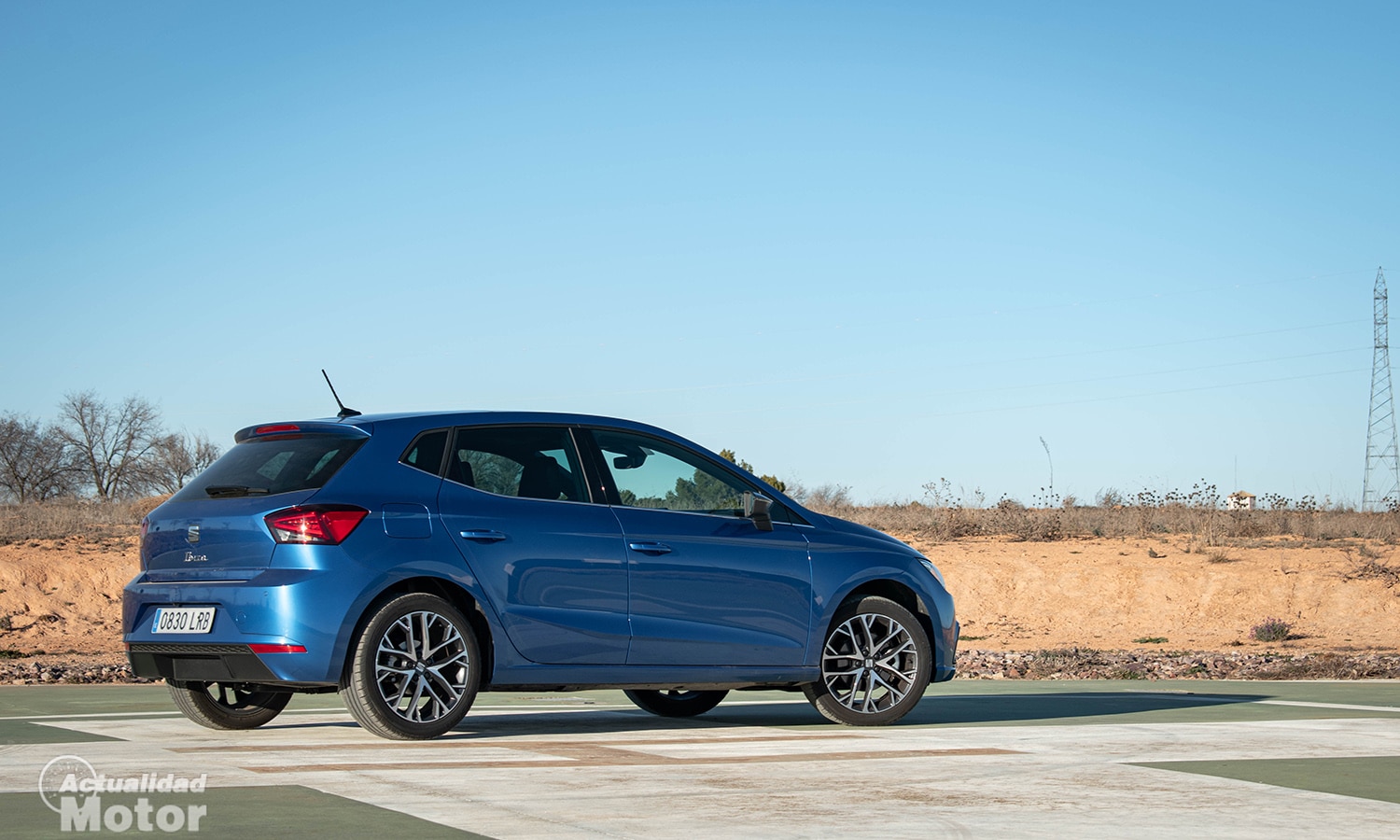
It may not be as much fun to drive as a Ford Fiesta, but it strikes that balance between high-tempo agility and on-road poise in return. He defends surprisingly well in both circumstances. It is comfortable, stable and at the same time agile.
The only reprehensible thing is that the gut feeling. of the direction does not end up living up to what you can expect from a Seat, which always have a good touch. And beware, compared to many of its rivals, it is not one of the least informative. Of course, that greater steering assistance can always be modified with the driving modes available in the higher versions.
In the city, of course, it moves very well between traffic with this engine and the suspension works effectively when it comes to "eating" the potholes, manhole covers and usual bumps in Spanish towns. To maneuver there are no problems either because visibility is good, and even better if, as in our case, you have parking sensors and a rear camera.
How much does the 110 hp Seat Ibiza TSI spend

We are ending this driving section talking about consumption. During our one week test we have obtained a average of 6,5 liters every 100 kilometers, practicing completely normal driving on most routes and combining city, motorway and two-way roads.
En road trips at a legal pace (at 120 km/h) it is normal for the trip computer to reflect average speeds 6 liters. For its part, in the city it always depends on its orography and the rush we are in, but it is common to be between 7 and 7,5 l/100 km. Logically where we are going to consume the least is on flat roads or ring roads, where it will slightly exceed 5 litres.
Conclusions after testing the Seat Ibiza "restyling"
We are ending our test with the Seat Ibiza restyling, tested with this mechanics so demanded and balanced for the Spanish utility. Is the Ibiza a good buy? From my point of view, it is one of the cars with the best price-product ratio of the category, of segment B.
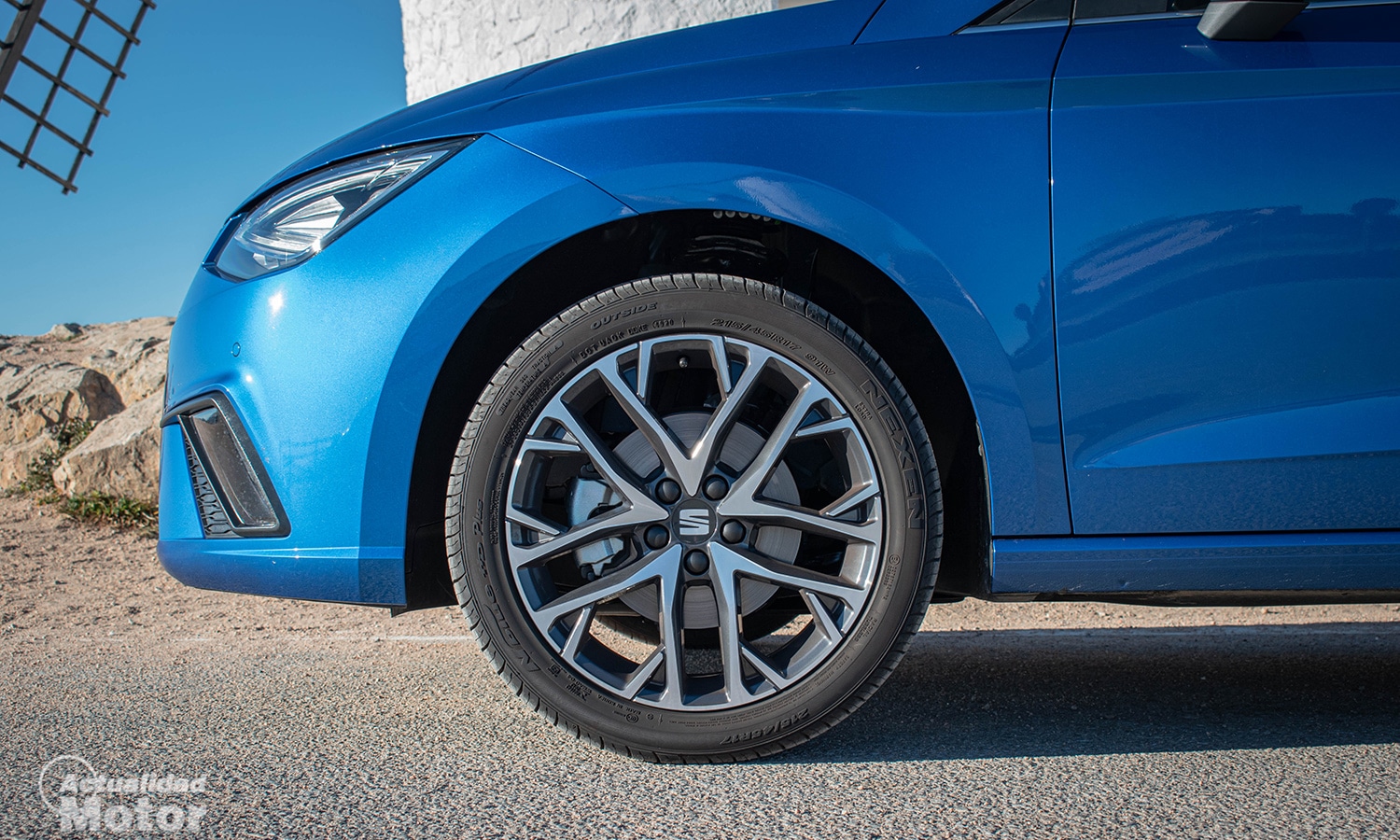
It has a good driving dynamics, it is comfortable, it is well insulated, its interior space is good and the trunk is one of the most generous in the category. In addition, it is already a myth of the Spanish roads for its almost 40 years for sale.
Now there is details that I don't like. For example, that in this restyling its exterior aesthetics have not changed practically anything, although it is true that it still looks fresh.
The biggest drawback I see is that no mild hybrid petrol engines, which would give it the DGT Eco label. A fairly important failure that can make Seat lose some sales. It is also not good news that there is not a single diesel option, although the brand has already made it clear that the demand for these propellants was already negligible in recent times for the Ibiza.
Equipment Seat Ibiza 2022
References
- Eco LED Headlights
- Unintentional Lane Change Assist
- automatic city braking
- Fatigue detector
- Speed limiter
- 4 airbags
- Third generation Seat Connect
- 8,25 inch touch screen with bluetooth
- automatic high beams
- Power folding mirrors
- Air Conditioning
- 15-inch steel wheels
- Multifunction steering wheel
- Three rear head restraints
Reference Plus (adds)
- cruise control
- rear parking sensors
- Fog lights
- Electric rear windows
- 40:60 split folding rear seats
Style (add to Reference)
- Full LED headlights and LED taillights
- cruise control
- Fog lights with cornering function
- Wireless Full Link
- 15-inch alloy wheels
- Leather steering wheel and gear lever
- 40:60 split rear seats
Style Plus (adds)
- Dual zone automatic climate control
- Heated mirrors
- Rain and light sensor
- Rear electric windows
- Front and rear parking sensors
- Reversing camera
FR (add to Style)
- Driving modes
- Specific suspension FR
- Dual zone automatic climate control
- Anti-glare interior mirror
- Rain and light sensor
- Rear windows
- rear parking sensors
- front armrest
- 16-inch alloy wheels (17 with TGI engine and 1.5 TSI 150)
- FR specific bumpers
- Mirrors and window frames in black
- Interior vents in burgundy color
- Indoor ambient lighting
- FR multifunction steering wheel
- headlining in black
- front armrest
- Double trunk bottom and net
FR Plus (adds)
- 9,2-inch screen with browser
- Wireless Full Link
- Front, rear and rear camera sensors
- illuminated aerators
- 10,25 inch digital box
- darkened glasses
- Adaptive cruise control
- lane keeping system
- jam assistant
- Recognition of traffic signs
- Keyless entry and start
- Wireless charger
Prices Seat Ibiza 2022
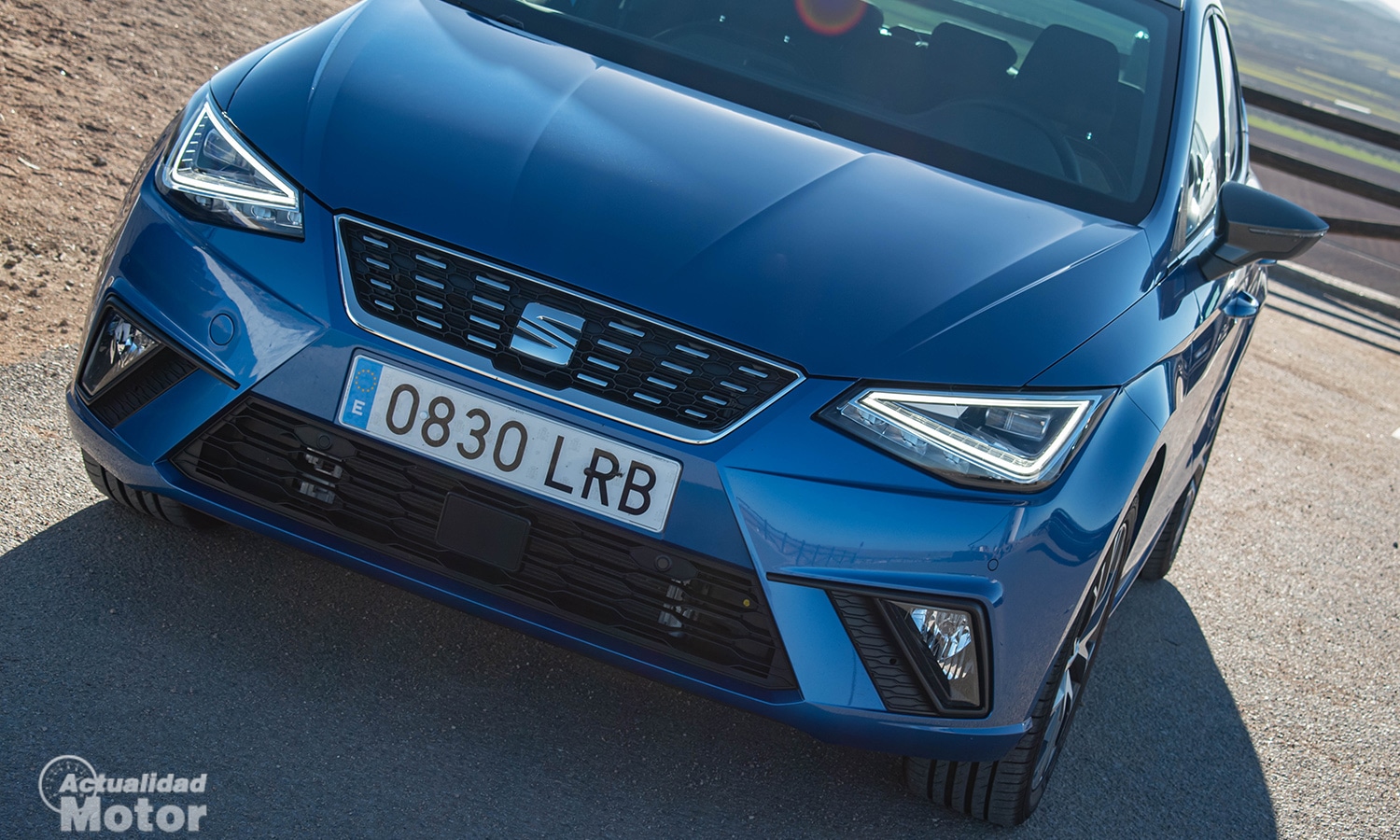
| Motor | Change | Finish | Price |
|---|---|---|---|
| Motor | Change | Finish | Price |
| IPM 80 | Manual | References | 16.620 € |
| IPM 80 | Manual | Reference More | 16.820 € |
| IPM 80 | Manual | Style | 18.350 € |
| IPM 80 | Manual | StylePlus | 18.550 € |
| TSI 110 | Manual | Style | 20.210 € |
| TSI 110 | Manual | StylePlus | 20.410 € |
| TSI 110 | Manual | FR | 22.360 € |
| TSI 110 | Manual | RF Plus | 22.410 € |
| TSI 150 | DSG | FR | 27.410 € |
| TSI 150 | DSG | RF Plus | 27.462 € |
| TGI 90 | Manual | References | 20.300 € |
| TGI 90 | Manual | Reference More | 20.500 € |
| TGI 90 | Manual | Style | 21.420 € |
| TGI 90 | Manual | StylePlus | 21.620 € |
| TGI 90 | Manual | FR | 24.020 € |
| TGI 90 | Manual | RF Plus | 24.070 € |
Editor's opinion

- Editor's rating
- 4.5 star rating
- Exceptional
- Seat Ibiza
- Review of: Diego Avila
- Posted on:
- Last modification:
- Exterior design
- interior design
- front seats
- rear seats
- Trunk
- Spring Suspension
- Consumption
- Comfort
- Price
Pros
- Balance in dynamic behavior
- Thrust of the 110 hp TSI engine
- Poise on expressways
Cons
- Some creaks in the dashboard
- Absence of micro-hybrid diesel and gasoline versions
- Some malfunctions on the touch screen




